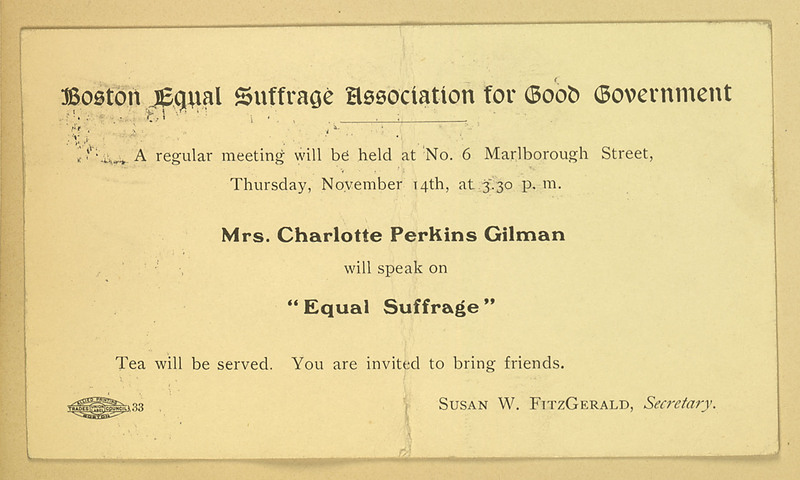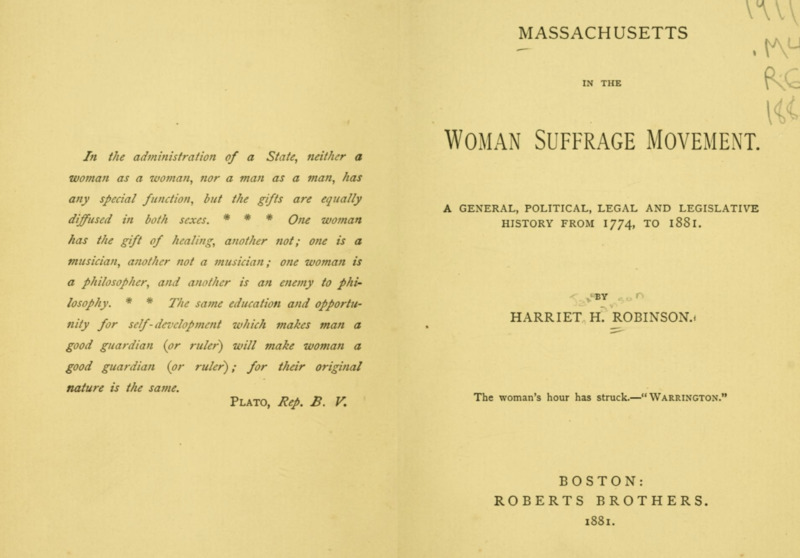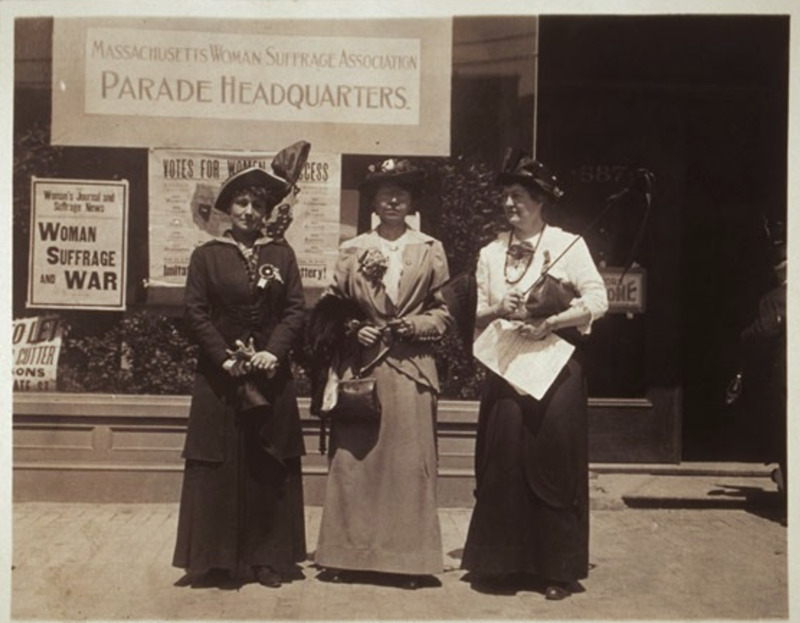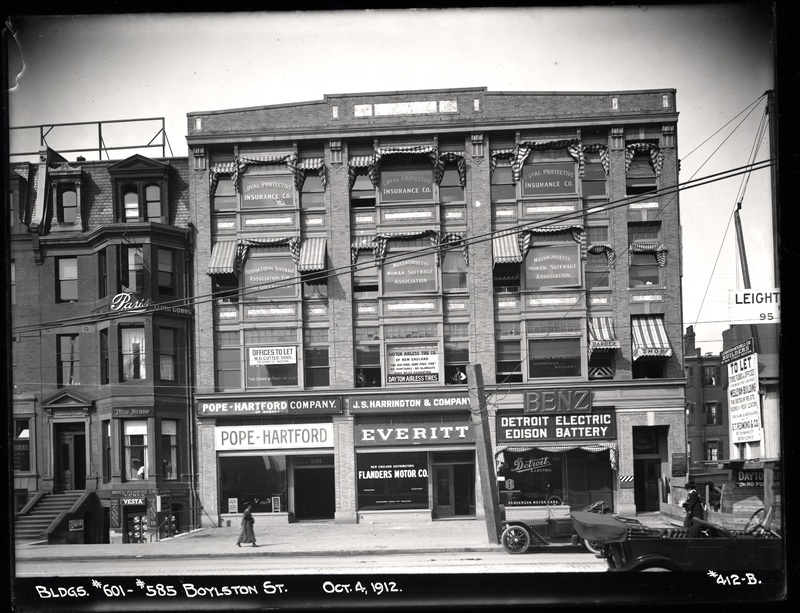Organizing in and beyond Boston
Campaigning off-campus
Given the college’s location in the city of Boston -- a hotspot for suffrage activism since the mid-1800s -- it was easy for Simmons students and faculty to campaign off-campus for votes for women. Ethel Johnson ‘10, for instance, was an officer in the Massachusetts Woman Suffrage Association (MWSA), which had formed in Boston in 1870. For decades, the MWSA shared its office space on Tremont Street and Park Street with the American Woman Suffrage Association, the New England Woman Suffrage Association, and the suffrage newspaper, The Woman’s Journal. Bostonian Josephine St. Pierre Ruffin had founded the pro-suffrage Black women’s club and paper, The Woman’s Era, years before her grandniece, Dorothy Boulding Ferebee ‘20, was born.
A Simmons sophomore at the Massachusetts Constitutional Convention
Suffrage was on the agenda when Massachusetts convened its fourth Constitutional Convention in 1917. Several advocates of votes for women addressed the Suffrage Committee, including a fiery sophomore student from Simmons named Gertrude Barish. Barish invoked a sense of competition between the United States and her native country, “Darkest Russia.”
“Always we looked to United States as the home of democracy. We looked to you because you have liberty and we had nothing but the oppression of Nicholas Romanoff. Now we are advancing. Look out or we will have suffrage for all women even before United States.”
- Gertrude Barish, 1917
New groups and strategies
After graduation -- and while teaching library science at Simmons -- alumna Wilda Claire Strong Peck became deeply involved in reform, politics, and suffrage in the nearby city of Lynn. Lynn had the second highest number of registered voters in Masschusetts, after Boston. Peck danced in a ballet at the Boston Opera House, staged as a benefit for the MWSA and the Red Cross, in 1915. In 1920, Peck became a founding member of the Cambridge League of Women Voters and served on its board. The bipartisan League of Women Voters succeeded the National Woman’s Suffrage Association, continuing the work of educating women as citizens and voters.
Simmons was especially well represented within the Boston Equal Suffrage Association for Good Government. Simmons trustee Fanny Baker Ames was not only a BESAGG president, but one of its founders -- along with Maud Wood Park, Pauline Agassiz Shaw and others -- in 1901. Soon Simmons professors Caroline Jewell Cook and Sara Cone Bryant, as well as Sarah Louise Arnold, became involved. This new organization hoped to inject new energy into the suffrage movement in Massachusetts, by providing an alternative to the more conventional MWSA. The two organizations were partners, not rivals, in suffrage activism; in fact, Simmons dean Sarah Louise Arnold worked with both the MWSA and the BESAGG.

An invitation to a Boston Equal Suffrage Association for Good Government talk in November 1907
(Courtesy of the Library of Congress)
A key BESAGG event, held at the Hotel Vendome on March 23, 1907, featured a panel of speakers including Cook. They and the featured speaker, Julia Ward Howe, all addressed the subject of “The Indebtedness of Women of Collegiate and Professional Training to the Leaders of the Equal Suffrage Movement.” The program intended to help recruit college women to the movement. Students from Simmons, Wellesley, Radcliffe, and Boston University, were all invited to the special meeting.
Other alums and former faculty were active in the suffrage struggle beyond Massachusetts. For instance, psychologist Ethel Puffer Howes belonged to the New York Woman’s Suffrage Party. Physics instructor Frances Gertrude Wick joined the Poughkeepsie Equal Suffrage League after leaving Simmons to teach at Vassar.




